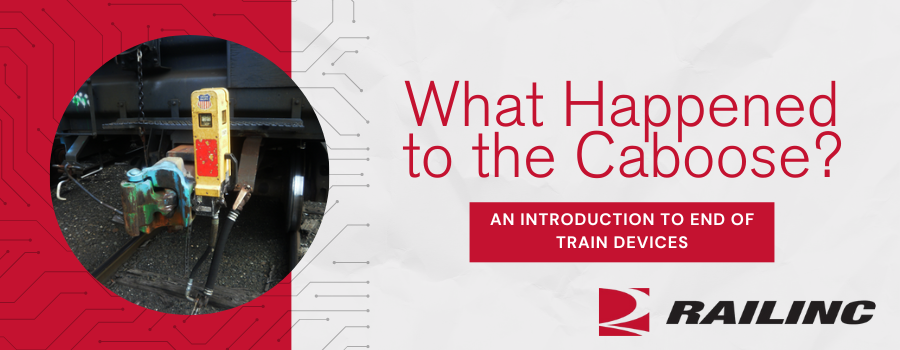
One of the enduring symbols always connected to railroads was the caboose. Even today when a model train set is bought in a department store, it usually includes a caboose. They came in all different shapes, sizes and colors depending on the railroad and were always seen trailing the train down the tracks.
Cabooses, also referred to as “hacks” in railroad terminology, normally contained a viewing cupola on the top. The main role of the caboose in railroading--and the reason it was placed on the end of the train--was so that the conductor or train crewman could ride in the cupola to watch the train as it moved and ensure it hadn’t come apart at any point in its journey. Previously, railroad crews could consist of up to five members and it wasn’t practical for the railroads to put them all in hotel. Therefore, the caboose also served as a rolling hotel equipped with beds, a cook stove and a bathroom, for when the train crew was away from their home terminal. Today’s freight trains infrequently use them. So, what happened to the caboose?
The caboose was largely replaced by technology. Today, railroads utilize End of Train Devices (EOTs), sometimes referred to as a flashing rear end device (FRED), in place of the caboose. The EOT attaches into the air hose on the trailing car in the train. It then records the air pressure in the hose that feeds the train brake system to ensure it has the proper pressure to safely stop a train before it departs on its trip. The EOT device includes radio technology that talks to the head locomotive, supplying information on air brake pressure to the crew as well as alerting them when the air pressure drops significantly. This usually indicates that train has come apart or there is a broken air hose somewhere in the consist. In twilight and nighttime operation, the EOT flashes a red light to let other trains, railroad personnel, or the public know where the train ends.
Each railroad maintains their own fleet of EOTs. These devices are often free to move on any mainline, long-haul train on any railroad. They are also equipped with automated equipment identification (AEI) tags that enable them to be tracked and generate movement events as they pass AEI readers. Railinc maintains an application that helps the railroads manage the location of their EOT devices and assists in the balancing of their usage between railroads.
A few cabooses are still in sporadic use today on some railroads. They are normally utilized when a local—or regional railroad—out of a serving yard has to back down a branch line to serve a customer. In this case, a caboose is attached to the end of the train with the conductor standing on the back platform of the caboose. The back platform on the caboose offers a much safer movement alternative than the conductor riding the lead car over longer distances. This allows the conductor to communicate with the engineer to ensure clear crossings, see upcoming switches or look for obstacles on the track. The caboose of today is normally referred to as a “shoving platform.”
As technology advances, Railinc will continue to work with Class Is, short lines, regionals, and other industry stakeholders to create and update products that support the industry. See the projects we’re working on this year here.
